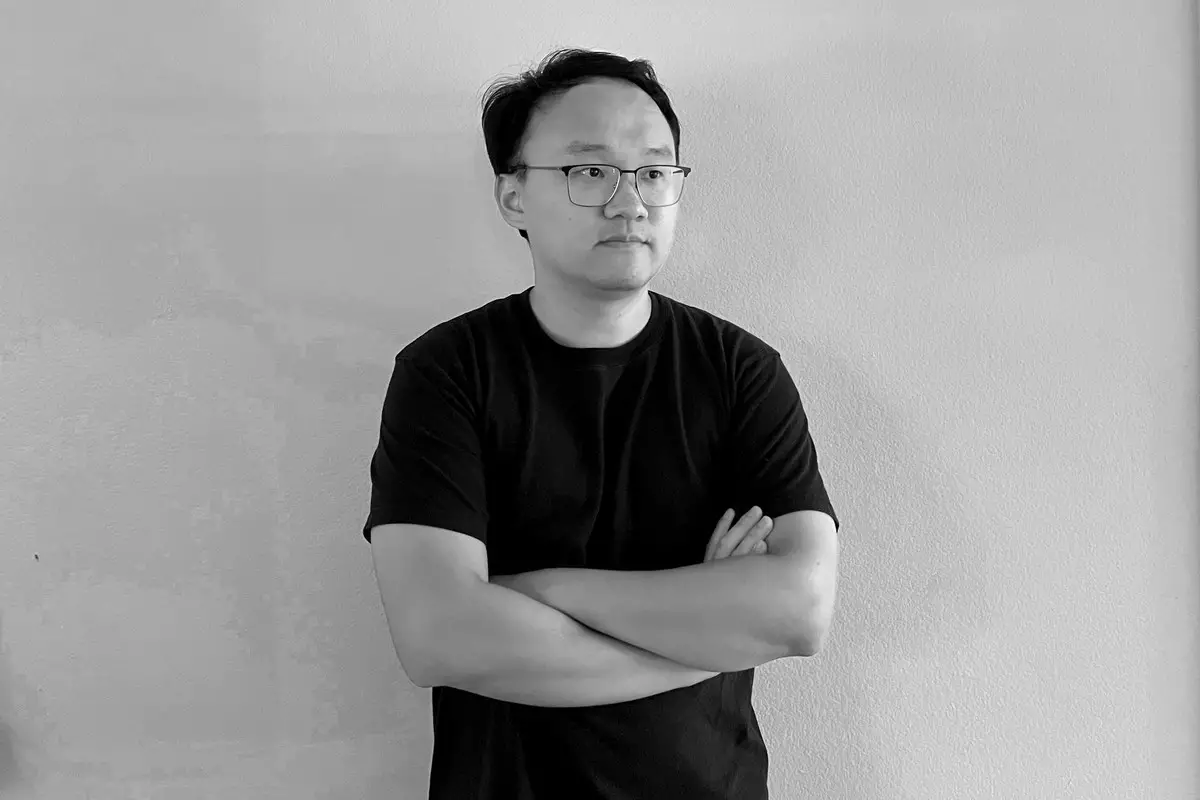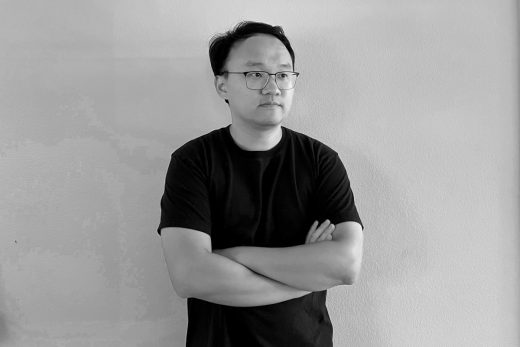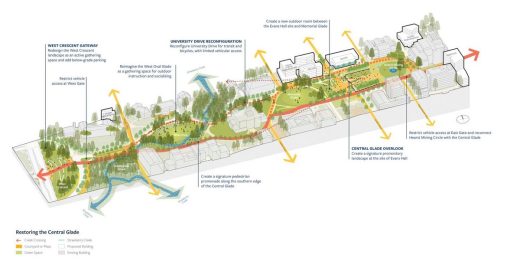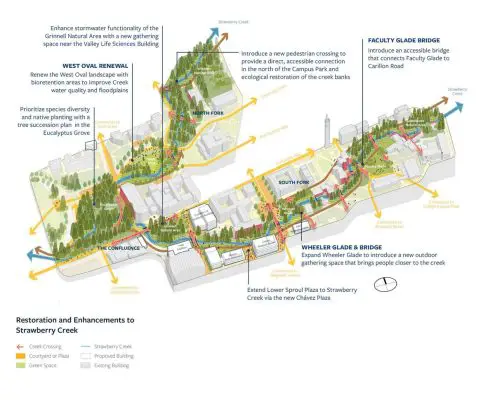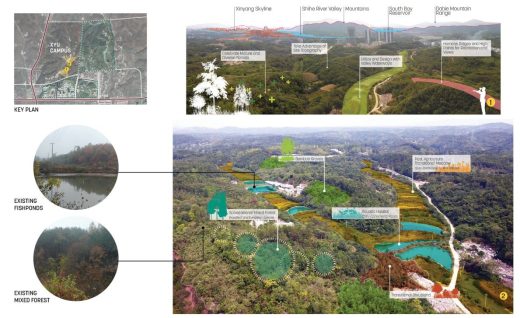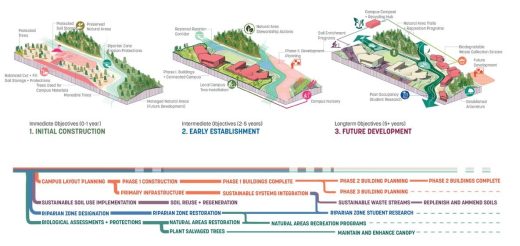Future sustainable campus design feasibility, Renyi Zhang architecture, Chinese architect and urban designer
Future Sustainable Campus Design Feasibility: Renyi Zhang
7 May 2024
Exploring the Feasibility of Future Sustainable Campus Design: An Interview with Mr. Renyi Zhang
In the context of rapidly changing contemporary educational environments, Mr. Renyi Zhang, a senior architect and urban designer, reflects deeply on the limitations of current campus designs and proposes his vision for future campuses in this interview. Faced with increasingly severe climate challenges and rapidly changing educational demands, Mr. Zhang focuses on creating low-carbon, sustainable campus environments.
He advocates for the integration of green buildings, smart infrastructure, and ecological integration to design campus spaces that can adapt to future changes and enhance the well-being of students and staff. These plans not only demonstrate his commitment to environmental sustainability but also reflect his forward-thinking in educational space innovation.
Mr. Renyi Zhang: A interdisciplinary Perspective in Campus Design
Mr. Renyi Zhang is a senior architect and urban designer with extensive design experience across the East and West Coasts of the United States and Mainland China. After earning his master’s degree on Architecture in Urban Design from Harvard University Graduate School of Design, Mr. Zhang worked at internationally renowned design firms such as Sasaki and Perkins&Will, participating in numerous significant domestic and international projects.
His designs, which have won multiple industry awards and received high acclaim from clients, are deeply rooted in his solid architectural background. Mr. Zhang adopts a bottom-up approach in his campus designs, thoroughly understanding technical requirements and emphasizing a close integration with low-carbon sustainability. Through this approach, his designs aim to achieve environmental sustainability and efficient resource use, ensuring that campus projects are not only aesthetically pleasing but also meet the needs for sustainable development in the future.
Campus Planning in Existing Urban Contexts – The UC Berkeley Campus Plan
Renyi Zhang played a significant role in the UC Berkeley Campus Master Plan and Long-Range Development Plan projects for the University of California, Berkeley, during his time at Sasaki. These projects introduced 2.5 million square feet of new educational and campus life spaces, renovated 4 million square feet, added 11,730 new beds, and improved the campus’s open spaces, transportation, and infrastructure. Zhang’s team balanced protecting the university’s historical and ecological assets with modernizing space to adapt to evolving disciplines. Despite a constrained urban environment, the project took a consensus-driven approach to foster innovation, community building, and inclusivity.
The project had two key focuses: cultural and ecological heritage preservation.
Cultural Heritage: The restoration of the Central Lawn, an iconic space on the Berkeley campus, was integral to the plan, which enhanced the lawn’s status by restoring an important east-west visual axis. The new Central Lawn Overlook replaced a 12-story building that blocked views from Hearst Mining Circle to the Golden Gate. The new building integrates seamlessly with the surrounding landscape and provides vibrant indoor and outdoor spaces for campus life activities.
Ecological Heritage: The Strawberry Creek restoration improved the creek’s ecological functions while enhancing natural vegetation and adding learning spots and new pathways. These measures aimed to reconnect people with nature while preserving the creek’s historic value.
The campus plan also carefully balanced new development with existing structures, particularly on the edges of the Campus Park. The strategic layout ensured new buildings fit harmoniously with the historic core. By integrating academic, research, housing, and other functions within and beyond the Campus Park, the plan strengthened internal and external campus connections. Academic facilities were prioritized, and by pedestrianizing the Campus Park, the project improved accessibility, aesthetics, and sustainability. Overall, the design improved spatial organization, strengthened connections with the city, and honored the campus’s cultural heritage while envisioning a more integrated and forward-thinking future.
New Campus Design Considerations – The Xinyang College South Bay Campus Master Plan
Mr. Zhang’s involvement in the campus planning project for the South Bay campus of Xinyang College at Sasaki showcases his multi-layered thinking in the planning and design of entirely new campus districts. The master plan for the new campus of Xinyang University highlights the characteristics of the school as a 21st-century liberal arts college, particularly emphasizing the active use of local natural landscape resources in campus planning and the comprehensive implementation of sustainability strategies.
The planning and design team developed an innovative model that not only integrates social, economic, and educational goals but also particularly focuses on the harmonious coexistence of campus design with the natural environment. Through thorough research on Xinyang University’s existing educational methods, campus features, ecoregion, and climate conditions, the planning process ensures that the campus design fully utilizes geographical and ecological advantages, achieving sustainable development of the educational environment.
The plan first actively utilizes local natural landscape resources to plan the campus, inspired by the local natural landscapes, cleverly extending the school space from formal quadrangles to various characteristic natural landscapes. These natural landscapes are not only aesthetically pleasing but also have ecological functions, considering the diversity and seasonality of ecology. The campus’s ridges and valleys are not only important natural landscapes but also ideal places for student recreation and outdoor learning, providing necessary ecosystem services such as stormwater management and diverse habitats.
The entire campus’s social, public, and recreational facilities form the backbone of campus life, with student housing tightly integrated into the rolling terrain, forming interconnected communities. All buildings and key facilities on campus are within a five-minute walk of each other, forming a pedestrian-oriented environment. Academic and social lives are seamlessly integrated in indoor and outdoor gathering spaces and courtyards, connected by interactive centers, cafes, public study areas, and recreational facilities, supporting informal learning and socializing throughout the campus.
Secondly, the design includes phased comprehensive planning of overall sustainability strategies, with the new campus’s master plan including a series of comprehensive sustainability strategies covering energy efficiency, waste management, and topsoil protection. Leveraging Xinyang’s mild climate, the building design emphasizes natural ventilation and maximizes winter solar gain, and the roof is equipped with photovoltaic panels and solar water heating facilities to reduce campus energy consumption.
The campus’s kitchen waste is processed through on-site composting, transformed into nutrient-rich organic matter, used to nourish the campus landscape, thereby minimizing campus waste output. During the construction process, topsoil is stored and protected through an effective phased strategy to reduce the impact of construction activities on the landscape, ensuring the sustainable development of the ecological environment. These comprehensive sustainability strategies not only improve the environmental quality of the campus but also provide a healthy, sustainable learning and living environment for the campus community.
Mr. Renyi Zhang’s Reflections on the Campus Design and Development of Future Sustainable Campuses
Campus space planning often needs to consider the needs for the next 10-20 years, and in the context of continuous technological iteration, it still needs to make localized adjustments according to the different requirements of each school and the community it is located in. In addition to the two representative campus plans mentioned above, Mr. Renyi Zhang has also participated in the planning and design of several well-known campuses in the United States.
For example, the planning of the Student Life Village at Virginia Tech, the master plan for the Lawrence campus of the University of Kansas, and the planning and design of the Capitol campus of Georgetown University, etc. In Mr. Renyi Zhang’s design practice, low-carbon sustainability is always a core consideration. His projects, by integrating the most advanced energy strategies, optimizing the use of natural resources, and implementing comprehensive reuse systems, not only demonstrate his commitment to environmental protection but also enhance the green ecological environment of the campus.
Feasibility of Future Sustainable Campus Design Summary
Mr. Renyi Zhang’s design philosophy is also reflected in his keen insight into the iteration of campus space needs. With the rapid development of higher education and the continuous changes in the needs of students and faculty, Mr. Renyi Zhang emphasizes that design must keep pace with the times, creating flexible spaces that can adapt to future changes. In summary, Mr. Renyi Zhang’s campus design projects showcase how he perfectly combines low-carbon sustainability principles with the protection of cultural and natural heritage while meeting the complex needs of the modern educational environment.
Through these design schemes, Mr. Zhang not only provides meaningful educational spaces for the present but also sets a new benchmark for future campus design. These projects not only reflect his personal design philosophy but also make a significant contribution to the entire field of educational architecture, pushing global campus architecture towards greener, more inclusive, and more sustainable directions.
Comments for the Exploring the Feasibility of Future Sustainable Campus Design: An Interview with Mr. Renyi Zhang – Chinese building design page welcome
An article about Planning Chinese Cities on e-architect:
Chinese Architectural Development
Recent Chinese Building Designs
Chengdu Building Complex
Design: Steven Holl Architects
Bank of Chéngdu Headquarters
Nikken Sekkei
Education Architecture by Type
Comments / photos for the Future Sustainable Campus Design Feasibility – Chinese City Planning & Architecture Masterplans – Urban Planning China page welcome.

